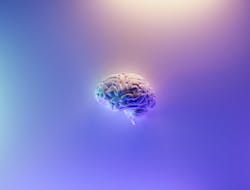In a paper published in the journal Science Advances, authors from The University of Texas Health Science Center at San Antonio report that norepinephrine, a fundamental chemical for brain performance, is locally regulated in a brain region called the visual cortex.
“Before our study, research suggested the possibility of local regulation of norepinephrine release, but it had never been directly demonstrated,” said study senior author Martin Paukert, MD, assistant professor of cellular and integrative physiology at UT Health San Antonio. The Robert J. Kleberg, Jr. and Helen C. Kleberg Foundation, the National Institute of Mental Health (NIMH) and the National Institute on Alcohol Abuse and Alcoholism (NIAAA) supported this work, which included Shawn R. Gray, PhD, and Liang Ye, MD, from the Paukert lab and collaborator Jing Yong Ye, PhD, from the biomedical engineering department at The University of Texas at San Antonio.
Disease states in which norepinephrine is known to be altered include substance use disorders, Alzheimer’s disease, post-traumatic stress disorder (PTSD) and attention-deficit/hyperactivity disorder (ADHD). In some substance use, Alzheimer’s and ADHD, the release of norepinephrine is reduced, resulting in lower attention. In other substance use and PTSD, the level is too high.
The team’s findings also extend to cells called astrocytes that function as helper cells in the brain and central nervous system.
“When a person makes a movement, such as turning the head to listen to a parent, and that is combined with visual stimulation, then more norepinephrine is released where visual information is processed,” Dr. Paukert said. “Our second finding, also important, is that astrocytes can reliably detect the rate of norepinephrine release.”
They are sensitive to it, in other words. Astrocytes alter their response accordingly, which is expected to change brain performance.
“Understanding norepinephrine release, its local regulation and the astrocyte response may represent a mechanism by which one could enhance sensory-specific attention,” Dr. Paukert said.

